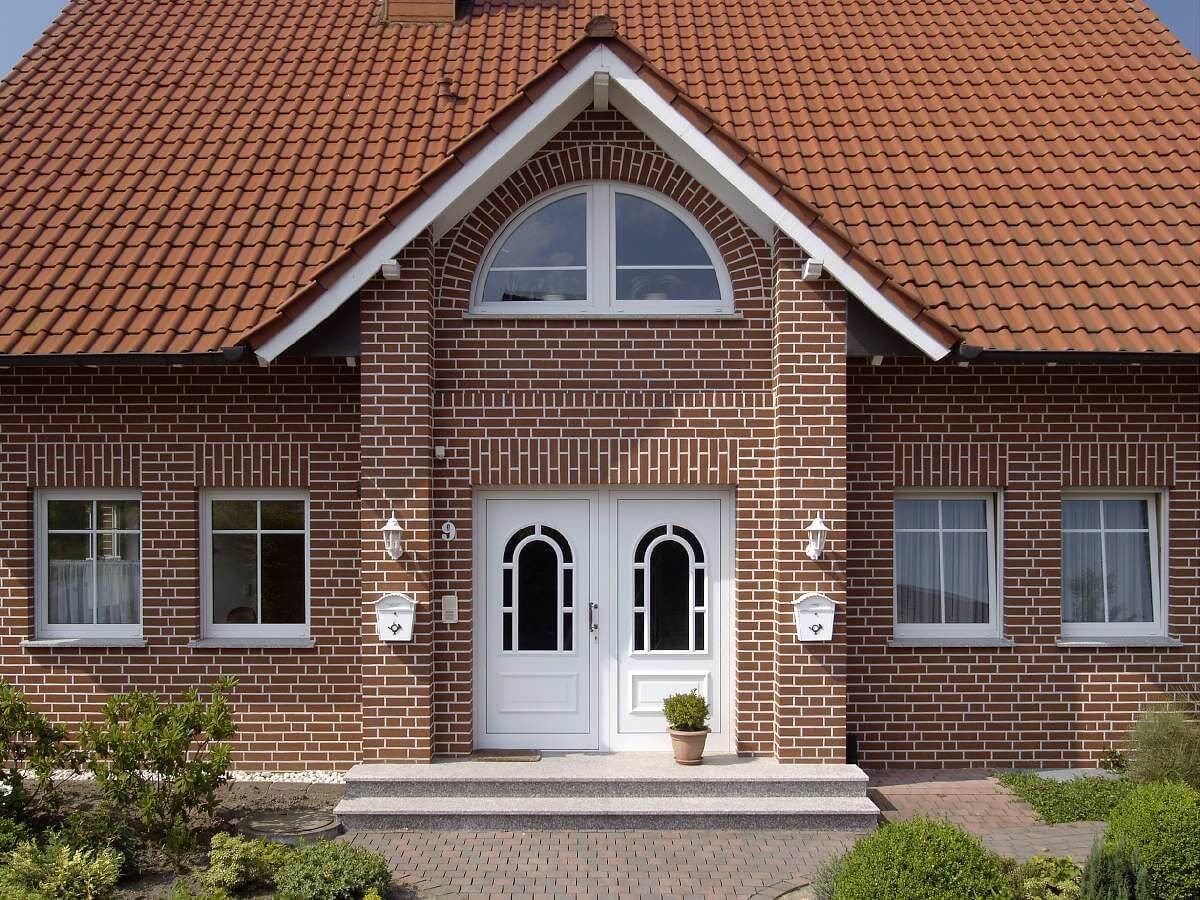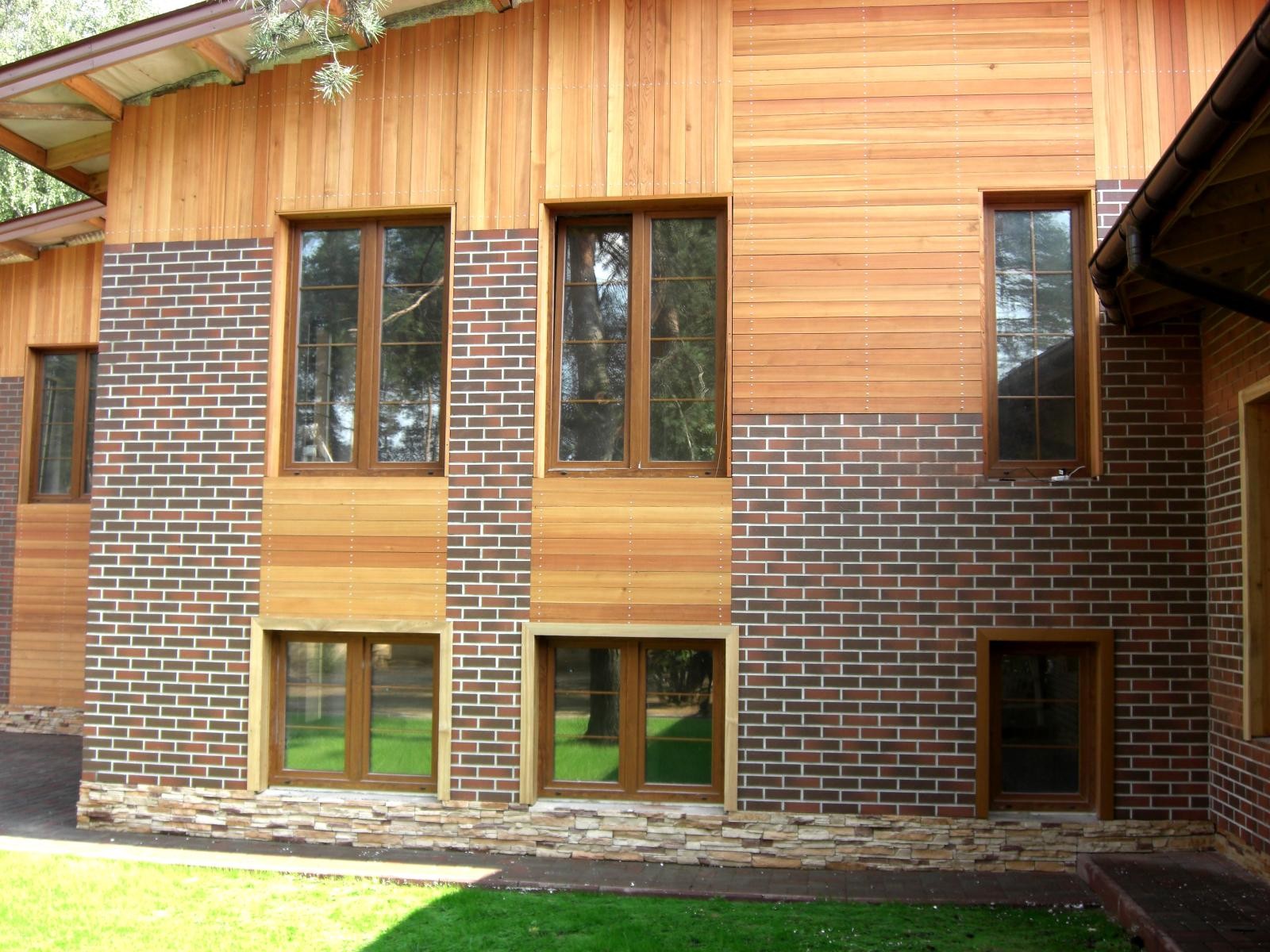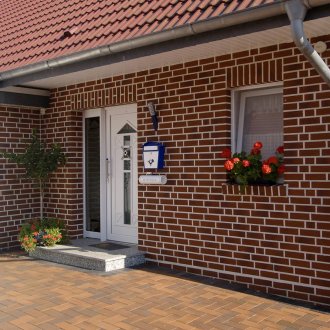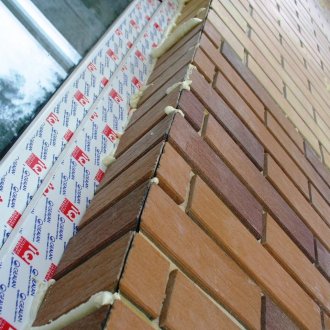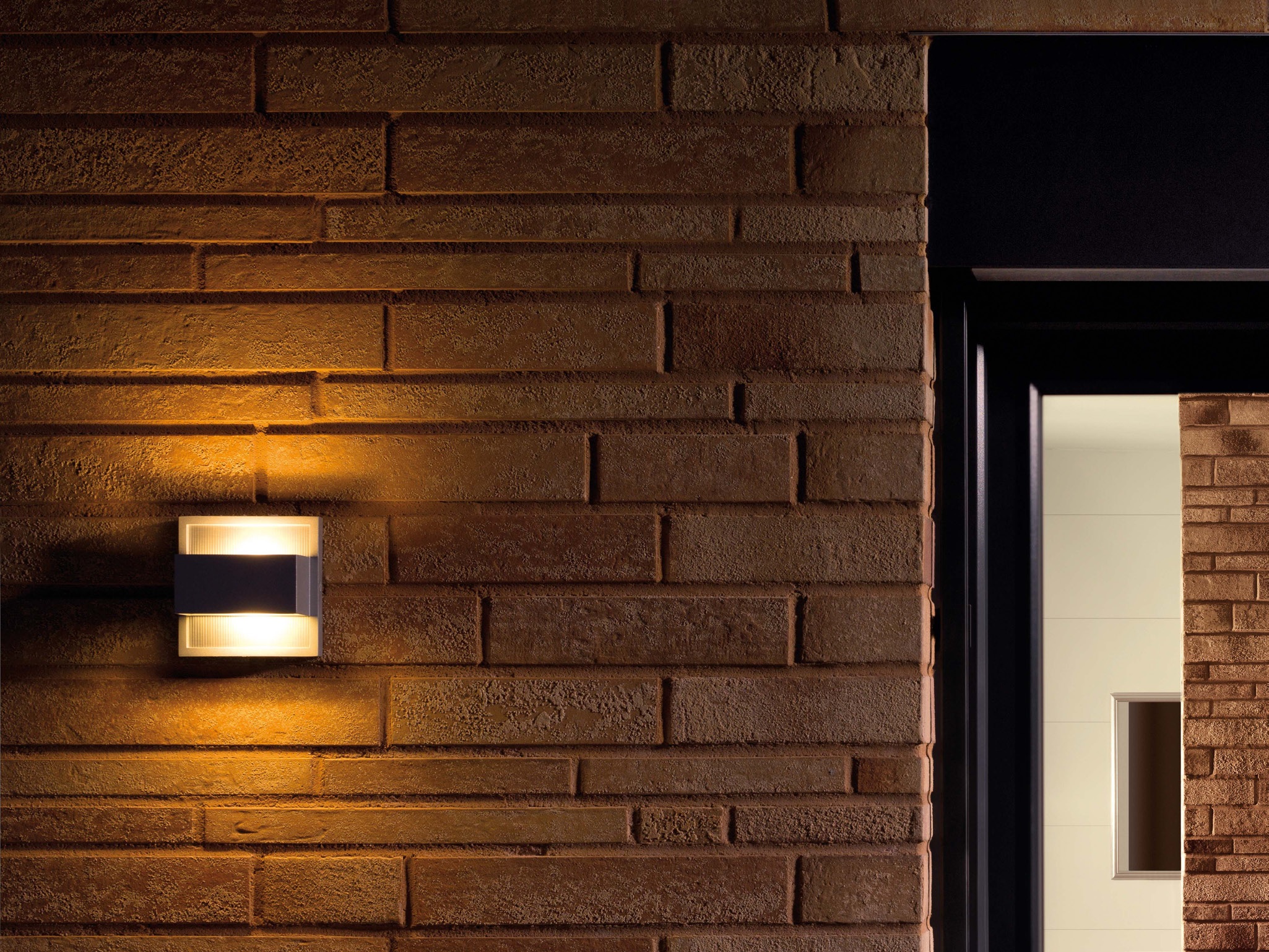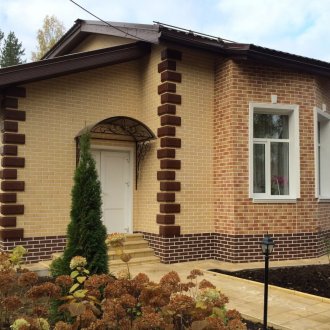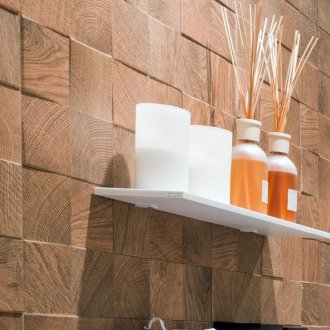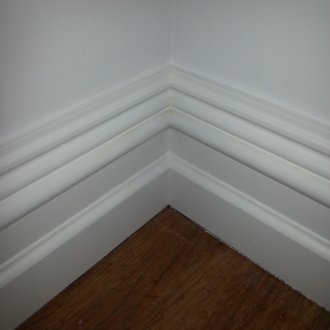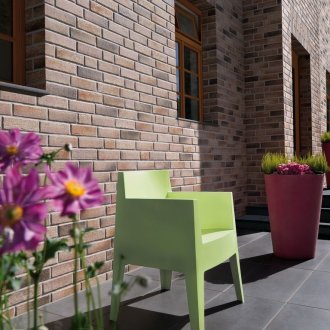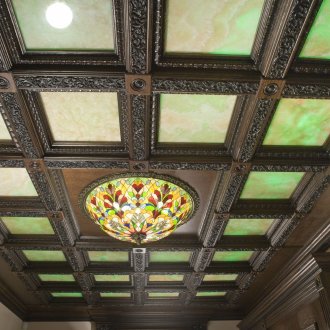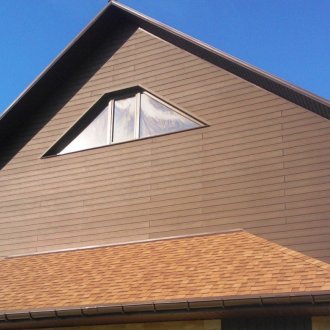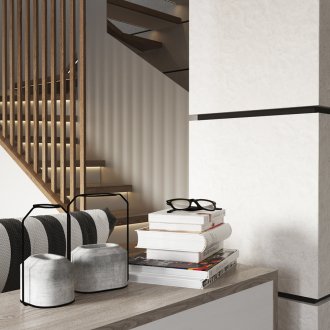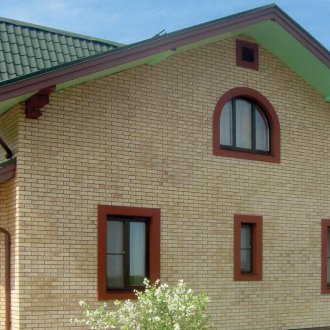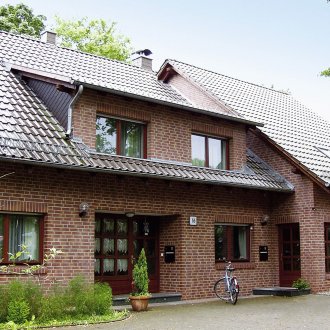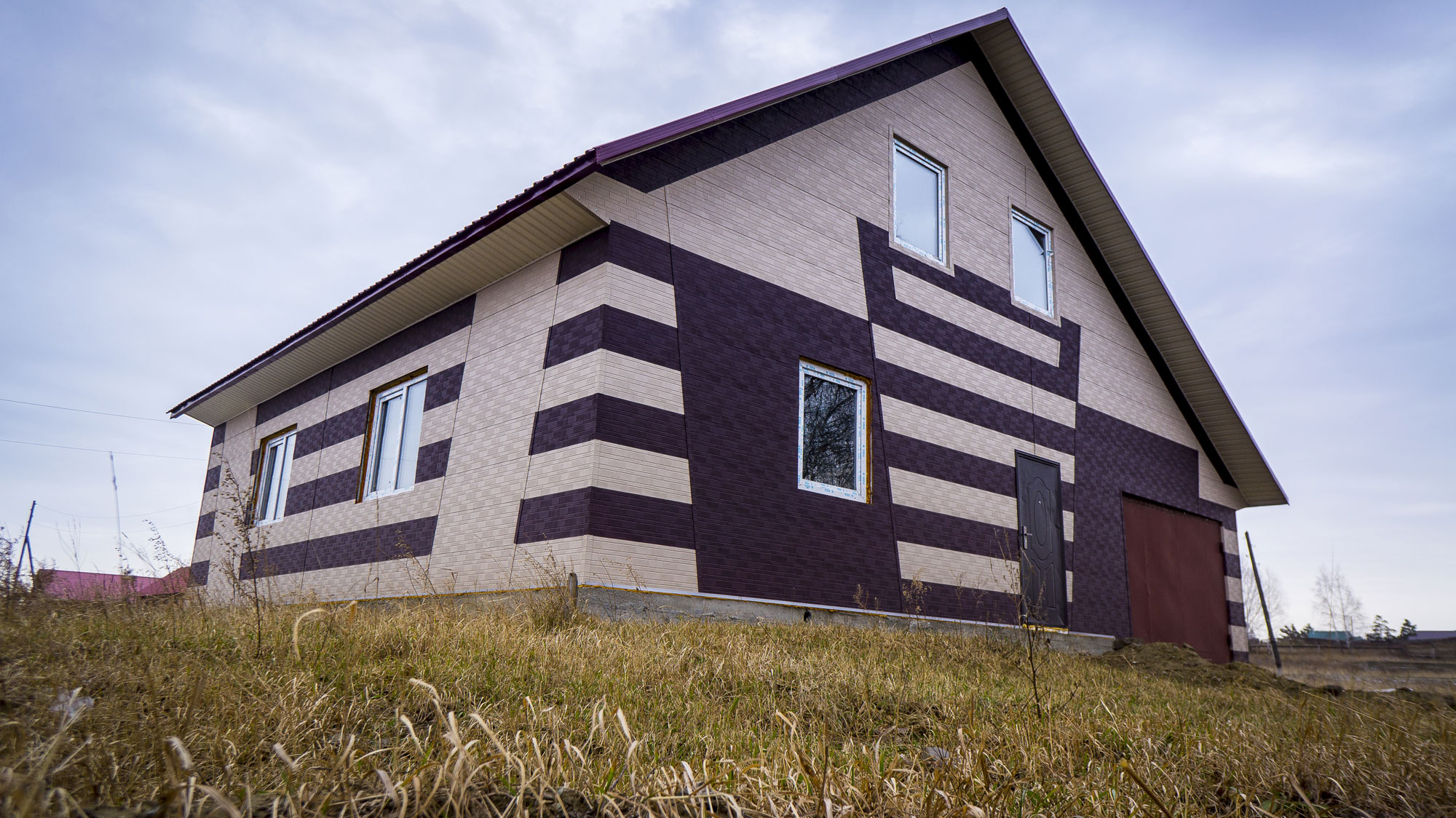Front thermal panels: main types (20 photos)
Exterior decoration of the house is an important stage in the construction or repair, modern materials and technologies make it possible to simultaneously insulate the building with quality. Ventilated facades are widespread, but vinyl siding, porcelain stoneware and various panel materials used in their arrangement for cladding are not suitable for all property owners.
A special monumentality to any building is given by high-quality facing bricks or decorative plaster with marble chips. Two-layer and three-layer systems using these materials are notable for the complexity of installation and high price, long terms of work. This has led to the appearance of such an original material as facade thermal panels for exterior decoration based on polyurethane foam and polystyrene foam.
Clinker-finished thermal panels
In Western Europe, clinker brick is the main material for cladding building facades. Houses made of it have been standing for more than 200 years and do not require repairs due to the excellent performance characteristics of the clinker. It has high strength, resistance to temperature extremes and severe frosts, does not absorb water or machine oil. The only negative for the domestic consumer is the high price of clinker bricks, the production of which uses special types of clay and high-temperature firing technology. Clinker cladding tiles have become a great alternative to this finishing material. It has a more affordable cost, but it does not differ in appearance from brick.
The only problem is the relatively complicated installation of the tile - it requires an even base, special glue, a highly skilled craftsman. It was possible to eliminate all these nuances by developing facade panels for brick based on clinker tiles. Their production is not difficult: in special forms, tiles are laid out, the resulting seams are covered with quartz sand, and then everything is filled with polyurethane foam. This insulation has a low coefficient of thermal conductivity, so its thickness in the panel rarely exceeds 40-60 mm.
Brick thermal panels have an area of about 0.5 square meters, this facilitates the installation and transportation of facade material. In the manufacture of clinker tiles from leading German, Polish and domestic manufacturers. This allows you to choose the material that optimally meets the requirements of designers and the budget of the facade work.
Does this material have pros and cons? The advantages of facade thermal panels include:
- simple installation;
- the possibility of finishing wooden houses;
- long term of operation;
- minimum qualification requirements for builders;
- high strength and wear resistance of the front surface;
- low load on the building foundation.
The use of this material in the reconstruction of buildings will make it possible to transform its appearance, make it respectable and more expensive.
The disadvantages of finishing with facade thermal panels include the high cost of the material.On the other hand, comparing them with siding or plastic panels, decorative plastering is simply unethical! Clinker brick facade panels compete with clinker brick, natural stone, and high-quality ceramic brick. Their cost is much higher, and for facing work it is necessary to invite highly qualified masters. The cost of their services may exceed the cost of lining with thermal panels several times.
Marble chips thermal panels
Brick is a classic finishing material for facades of buildings for various purposes. He has not only fans, but also opponents - some dream of revealing decorative stucco under a stone or wood, others with marble or travertine. Working with these materials is difficult, it requires careful preparation of surfaces, professional skills and extensive experience. A compromise can be facade thermal panels with marble chips based on polystyrene foam.
This facade material is a base of rigid insulation, on the front side of which marble chips are applied. It can have any texture, for example, wood-based thermal panels are very popular.
The panels are connected to the castle, so there are no cold bridges. The surface is protected by polymer compounds from shedding, burnout and negative climatic factors.
The panels are fixed to the walls of the house with the help of inexpensive adhesive compounds, this work does not require highly skilled craftsmen. On the external decoration of the house with the help of this material takes 2-3 days. Among the other advantages of thermal panels with marble chips are:
- wide color gamut;
- high heat engineering and sound insulation characteristics;
- minimum load on the building foundation and load-bearing walls;
- reduction in the cost of insulation and home decoration.
You can use thermal panels for wall cladding of brick, aerated concrete, foam concrete, wood, concrete panels. They have an affordable cost, do not require large expenses for transportation and storage.
Scope of thermal panels
All types of thermal panels are used for high-quality decoration of facades. The presence of additional and corner elements allows you to effectively complete projects of any complexity. Where are the facades for plaster or brick relevant? It can be private cottages, country houses, town houses and municipal high-rise buildings. Lined with thermal panels, they will stand out against the general background not only in appearance, but also in terms of thermal performance and, as a result, high comfort.
High quality coating and durability makes thermal panels the best material for decorating the facades of shops, shopping centers, sports complexes, business centers, administrative and office buildings. The environmental friendliness of this product allows its use in suburban construction: in the construction of holiday homes, medical and preschool institutions. Commercial real estate finished with thermal panels will attract the attention of potential customers. The front material will give the necessary respectability and solidity, which business partners will appreciate.
In the course of work on lining with thermal panels, metal profiles are not used - the number of fasteners is minimal. This allows you to get rid of the bridges of cold, which makes the material the best choice when implementing projects to insulate old buildings. The panels themselves are also free of metal, which reduces their weight and improves the thermal conductivity.
Facade thermal panels are a practical, aesthetically attractive and durable material. It can be used for cladding and insulation of residential buildings and commercial real estate.
Thermal panels are easy to install, low maintenance and light weight.This material fully meets the expectations of customers, which is the reason for the growth of its popularity in our country.


